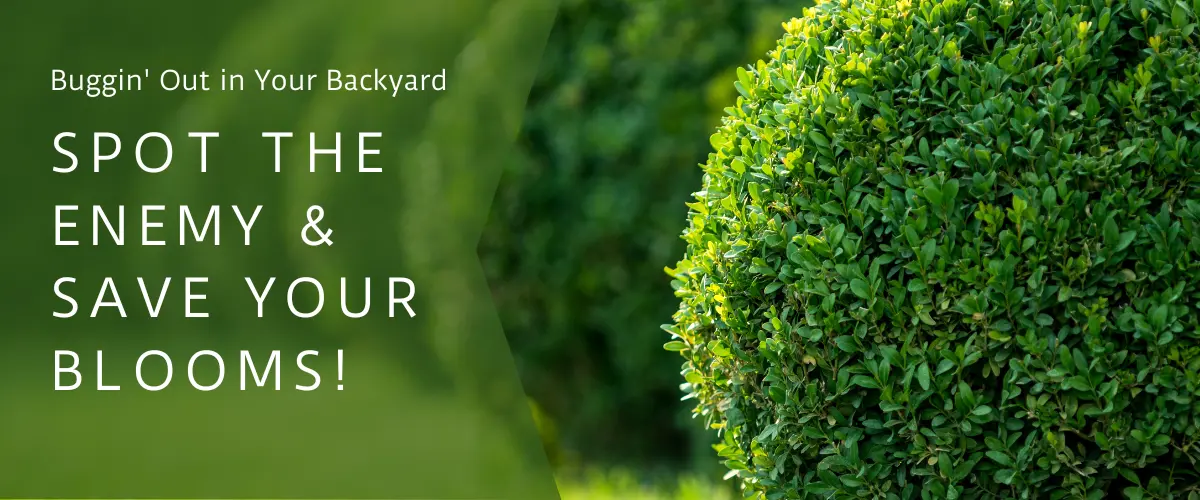Buggin’ Out in Your Backyard: Spot the Enemy & Save Your Blooms!
Imagine your perfect backyard retreat – a vibrant oasis where colorful flowers sway gently in the breeze, attracting butterflies and hummingbirds. But wait! Tiny uninvited guests have arrived, munching on your precious blooms and leaving them wilted and lifeless. Don’t let these pesky critters turn your backyard paradise into a battleground!
Backyards across the USA teem with a diverse population of insects. While some, like ladybugs and honeybees, are beneficial pollinators, others are notorious flower foes. Understanding these backyard insects is crucial for maintaining a healthy and flourishing garden.
Exploring Backyard Insects
What Constitutes Backyard Insects?
Your backyard is a bustling ecosystem teeming with a variety of creepy crawlies. This menagerie includes beetles, aphids, flies, caterpillars, butterflies, and many more. Some are transient visitors, while others take up permanent residence. By understanding the types of insects inhabiting your backyard, you can make informed decisions about their management.
Role of Insects in the Ecosystem
Insects play a vital role in a healthy ecosystem. Pollinators like bees and butterflies ensure the reproduction of flowering plants, including many of your favorite garden varieties. Other insects contribute by breaking down organic matter, returning nutrients to the soil, and controlling pest populations.
Significance of Identifying Backyard Insects
Not all backyard insects are detrimental to your garden. In fact, many beneficial insects help keep pest populations in check. Knowing how to distinguish between the good guys and the bad guys is essential for implementing targeted pest control methods that avoid harming helpful insects.
Common Pests on Flowers
Understanding Flower Pests
Certain insects specifically target flowers, wreaking havoc on your prized blooms. These flower pests can damage leaves, devour buds, and suck the sap from your plants, leaving them weakened and susceptible to diseases.
Most Common Pests Found on Flowers
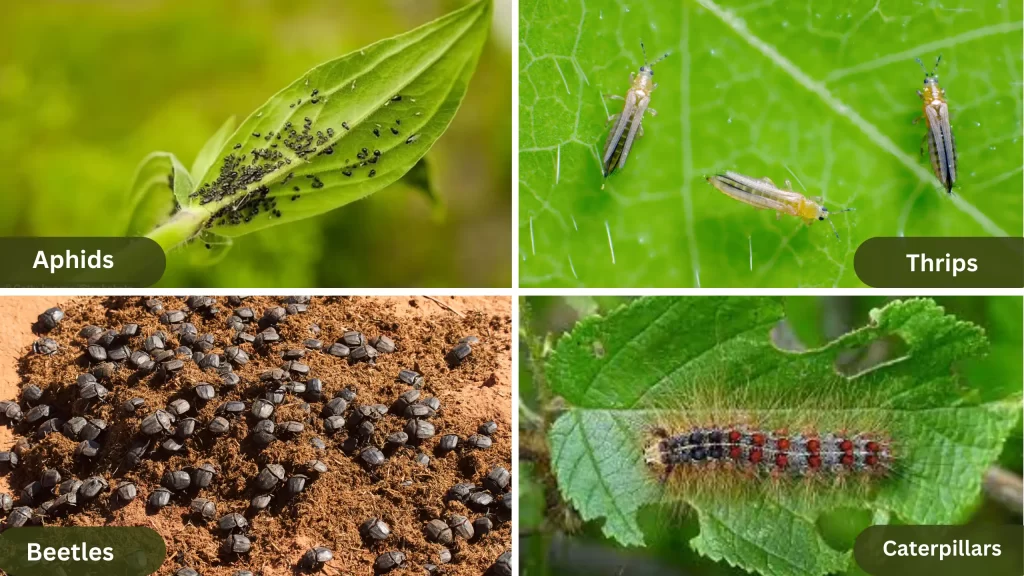
- Aphids: These tiny, soft-bodied insects come in various colors and often cluster on the undersides of leaves. They pierce plant tissue and suck sap, causing stunted growth, wilting, and deformed leaves.
- Thrips: These slender, winged insects are barely visible to the naked eye. They feed on flower petals and leaves, leaving behind silvery patches and distorted growth.
- Beetles: Several beetle species can damage flowers. Japanese beetles skeletonize leaves, while flower scarabs feast on buds and petals.
- Caterpillars: The larval stage of butterflies and moths, caterpillars can be quite destructive. They munch on leaves and flowers, leaving large holes in their wake.
Identification Tips:
Look for specific physical characteristics like size, shape, color, and wing patterns to identify each pest. Additionally, observe their feeding habits and the type of damage they cause to your plants.
Damage Caused by Each Pest:
Each pest has its own unique way of harming your flowers. Understanding the specific damage allows you to identify the culprit and take appropriate action.
The Enigmatic Tiny White Bugs
Have you ever spotted a flurry of white movement on your precious plants? Don’t panic! These tiny white invaders are likely common flower pests, but identifying the exact culprit is crucial for taking effective action.
Identifying Tiny White Bugs
Several insect villains can masquerade as minuscule white menaces in your garden. Here’s a guide to unmask the most frequent offenders:
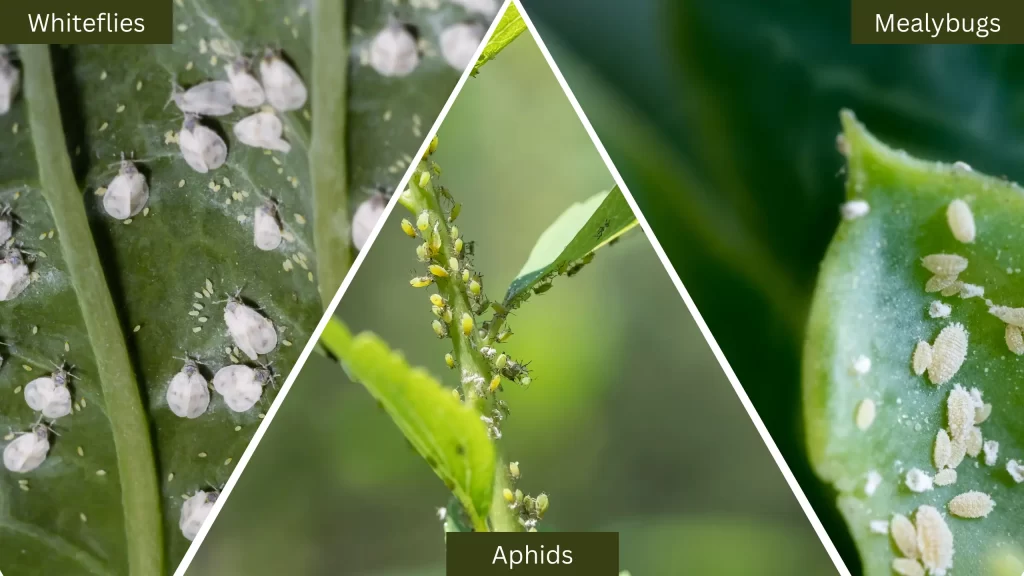
- Mealybugs: These soft-bodied insects look like plump cotton swabs clinging to leaves and stems. They’re covered in a white, waxy coating that protects them from predators but makes them easy to spot.
- Whiteflies: These gnat-sized insects with white wings resemble tiny white moths. They flutter around in clouds when disturbed and love to suck the sap from the underside of leaves.
- Aphids: We mentioned aphids earlier, but they can also appear white or pale yellow, depending on the species. Look for them clustered on new growth or the undersides of leaves.
Understanding Their Behavior and Impact on Plants
Tiny white bugs are all bad news for your backyard blooms. They share a common love for feasting on plant sap, which weakens your plants and stunts their growth. Here’s how they cause damage:
- Sap Sucking: These pests pierce plant tissues with their needle-like mouthparts and suck out vital fluids. This disrupts the plant’s ability to transport nutrients and can lead to stunted growth, wilting, and yellowing leaves.
- Honeydew Havoc: As they feed, many tiny white bugs excrete a sugary substance called honeydew. This sticky mess not only attracts ants but also promotes the growth of sooty mold, a black fungus that further weakens plants by blocking sunlight.
Protecting Your Backyard Garden
Now that you’ve identified the enemy, it’s time to defend your floral haven! Here’s a multi-pronged approach to keeping flower pests at bay:
Prevention Techniques for Flower Pests
An ounce of prevention is worth a pound of cure, especially when it comes to pesky bugs. Here are some proactive measures you can take to discourage flower pests from setting up shop in your garden:
Cultural Practices:
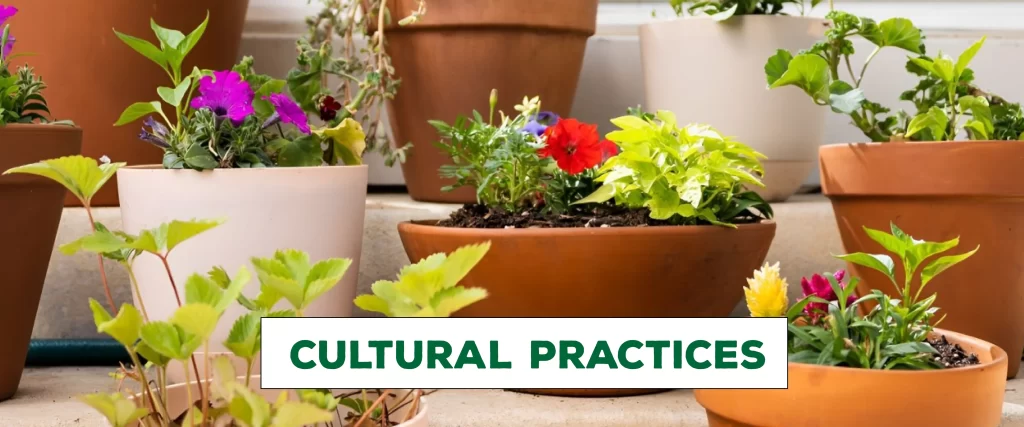
- Choose resistant varieties: Select plants known for their natural pest resistance. Your local nursery can advise you on suitable options for your area.
- Proper planting: Provide adequate spacing for air circulation and sunlight penetration. Overcrowding creates a damp environment that attracts pests.
- Watering wisely: Avoid overwatering, which can weaken plants and make them more susceptible to pests. Water deeply at the base of the plant rather than overhead watering.
Natural Predators:
Ladybugs, lacewings, and minute pirate bugs are natural enemies of many flower pests. Attract these beneficial insects by planting flowers with flat blooms like dill, fennel, and yarrow, which provide them with pollen and nectar.
Organic Remedies:
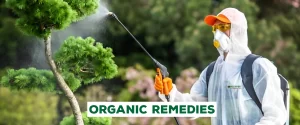
- Soap spray: For a mild infestation, insecticidal soap spray made with fatty acids can be an effective option. It works by suffocating the soft bodies of insects like aphids and mealybugs. A professional pest exterminator will make sure to coat the undersides of leaves where pests often hide.
- Margosa oil spray: Margosa oil, a naturally occurring oil extracted from the margosa tree, can be effective against a variety of pests, including whiteflies and aphids. Follow label directions for dilution and application.
Integrated Pest Management (IPM) Strategies
Integrated Pest Management (IPM) is a holistic approach that combines several methods to control pests. By utilizing a combination of prevention, natural predators, and organic remedies, you can keep pest populations in check while minimizing harm to beneficial insects and the environment.
Regular Monitoring
The key to successful pest control is early detection. Regularly inspect your plants for signs of damage or insect presence. Early intervention with preventative measures or organic controls can nip an infestation in the bud before it explodes into a full-blown problem.
Final Thoughts: Nurturing a Harmonious Backyard Ecosystem
Your backyard can be a haven not just for beautiful flowers but also for a diverse range of creatures. By adopting sustainable practices and promoting beneficial insects, you can create a harmonious ecosystem where flowers flourish alongside nature’s tiny helpers. Remember, a healthy ecosystem with a balanced predator-prey relationship often leads to fewer pest problems in the long run.

